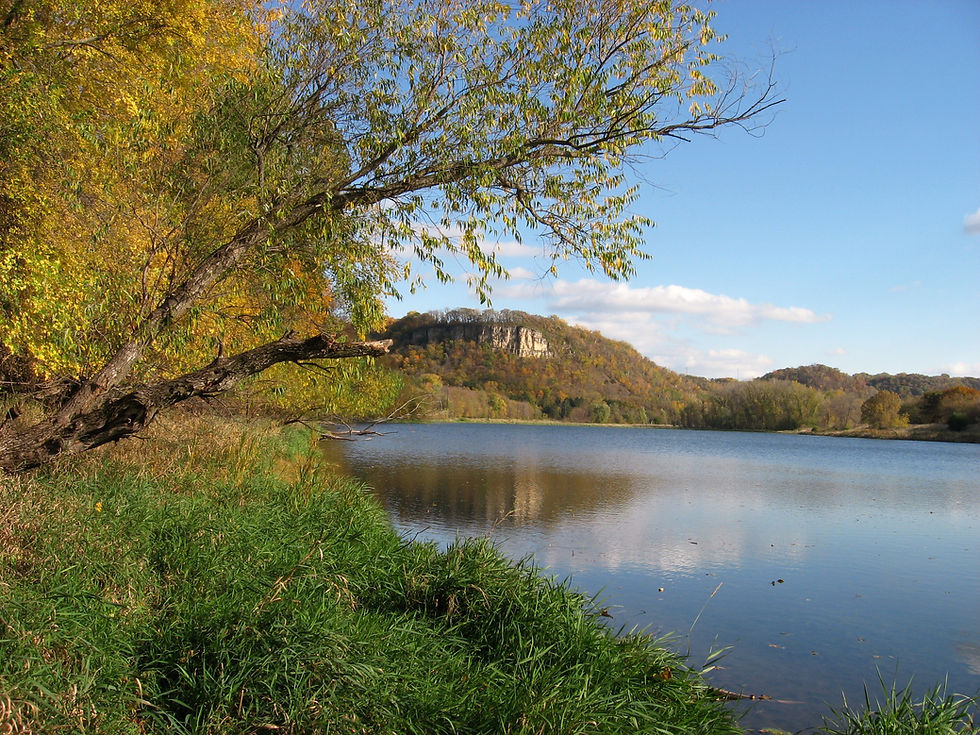Spring Colors Abound
- Bruce Ause
- May 13, 2018
- 2 min read

Lighthouse Island
The first sign of green-up among our local native trees are the willows on Lighthouse Island on the Wisconsin side of the channel at the Head of Lake Pepin. Since Kathy and I moved to Wacouta in 1970, we have observed this island extending downstream by over one half mile to it's present location. This gives us a little perspective on how much sediment is entering the lake every year.

Rattlesnake Bluff Shrouded in Fog
As the ice leaves Wacouta pond and trees leaf out, whole new vistas present themselves early in the morning following an overnight rain.

Floodwater Canoeing
As the unusually heavy snows of mid-April began to melt, the Mississippi River in Red Wing rose rather quickly to a level of 12.6 feet. This high water provides a wonderful canoeing opportunity in the floodplain forest of our backwaters. Unlike the swift current of the main channel, the flooded areas are void of noticeable moving water. These high river levels allow access to areas unreachable to paddlers later in the season.

Silver Maple Flower
While paddling on Wacouta bay in the morning of April 25th, I came across a silver maple in full bloom that had recently tipped over. Silver maples are dioecious with male flowers on one tree and female flowers on another. These male flowers are actually quite colorful. Maples hold ripe flowers for three to four weeks allowing spring winds to carry pollen from male to female making fertilization complete before the leaves come out.

Canada Goose Nesting
Canada geese nesting on muskrat houses are extremely vulnerable to fluctuating water levels as well as predation by bald eagles. Eagles have a reputation of driving adult geese off their nests and eating the eggs as well as the young goslings.

Solitary Sandpiper Feeding
As the floodwaters begin to recede, it is quite common to observe shorebirds like this solitary sandpiper probing the moist ground for aquatic insects to eat.

Blooming Hepaticas
Meanwhile in the upland forests of Wacouta, now is the time to observe some of the early spring ephemerals. Hepatica, sometimes called liver-leaf, gets it's name from the three-lobed leaf that reminded early naturalists of the lobes of human livers are now in bloom.

Male Indigo Bunting
Despite the late and spastic spring weather, the arrival of colorful birds to our feeding station was almost right on schedule (May 8). By far the most stunning visitor was the male indigo bunting. These birds seldom come to our feeders, but are quite fond of safflower seeds scattered on the ground.

Rose-Breasted Grosbeak
Rose-breasted grosbeaks live up to their name, by using their large powerful beaks for breaking seeds. This helps to explain their visits to our sunflower seed feeder as soon as they arrive in our yard. In previous years, we were grateful to have a couple pairs. On Thursday morning May 10th, I awoke to seven males and four females at our feeders.




Comments